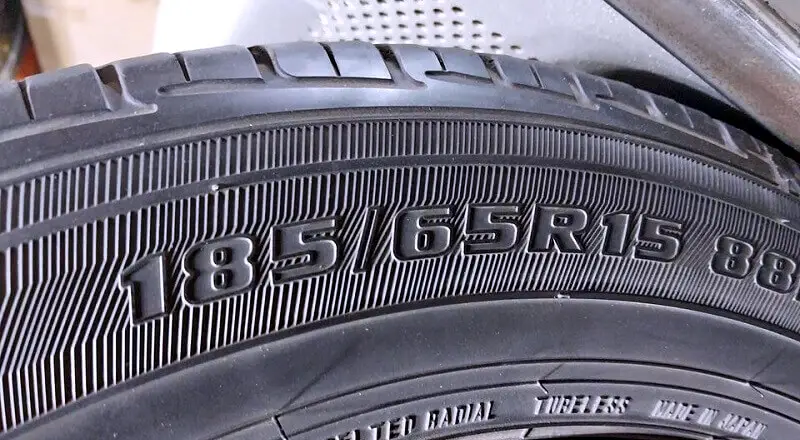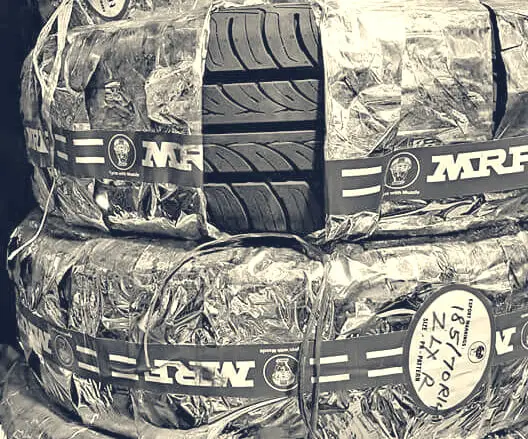Tire Size 185 FAQ

Understanding the specifications and sizing is essential to ensure a safe and comfortable ride. One such tire size is the 185 tire, a popular choice for many small to medium-sized cars. By the end of this article, you’ll better understand 185 tires and whether they are the right fit for your vehicle.
What Does 185 Mean On A Tire?
The number 185 on a tire refers to its section width, measured in millimeters. Section width is the distance between the widest points of the tire’s outer sidewalls when mounted on a rim and inflated to the recommended air pressure.
The 185 tire, therefore, has a section width of 185 millimeters, or approximately 7.28 inches. Tire sizes are typically represented by a series of numbers and letters, such as 185/65R15. In this example, 185 refers to the section width, while the following two numbers (65) represent the aspect ratio.
The aspect ratio is the relationship between the tire’s section height (the distance from the rim to the tread) and its section width, expressed as a percentage. In this case, the tire’s section height is 65% of the section width. The letter “R” indicates a radial tire, and the last two digits (15) represent the wheel diameter in inches.
Tire Size 185 Price
The cost of 185 tires can vary widely based on factors such as the tire’s brand, performance characteristics, and materials used in construction. Typically, you can expect to pay anywhere from $50 to $107 per tire, though prices can range higher for premium brands and performance tires.
It’s crucial to consider the quality and type of tire when comparing prices. High-quality, durable tires will last longer and provide better performance, potentially saving you money in the long run. Additionally, performance tires may cost more upfront but offer improved handling and traction, especially in challenging conditions.
You must balance your budget with your driving needs and preferences when purchasing tires. Remember to factor in mounting, balancing, and tire disposal fees, which can add to the overall expense.

How Tall Is A 185 Tire?
The overall diameter of a 185 tire can vary depending on the aspect ratio and wheel diameter. To calculate the overall diameter in inches, you can use the following formula:
- Overall Diameter = (2 x Section Height) + Wheel Diameter
Using the example tire size 185/65R15:
- Section Height = 185 mm x 0.65 = 120.25 mm
- Section Height in Inches = 4.73 inches
- Overall Diameter = (2 x 4.73 inches) + 15 inches = 24.46 inches
So, the overall diameter of a 185/65R15 tire is approximately 24.46 inches. Keep in mind that the actual overall diameter can vary slightly depending on the specific tire model and manufacturer.
How Wide Is A 185 Tire In Inches?
As previously mentioned, the 185 in a tire size refers to its section width in millimeters. To convert this measurement to inches, divide by 25.4, as there are 25.4 millimeters in an inch:
- Width in Inches = 185 mm / 25.4 mm/in = 7.28 inches
So, a 185 tire has a width of approximately 7.28 inches. This width can be helpful to know when comparing tire sizes or determining if a specific tire will fit your vehicle and wheel setup. Keep in mind that the actual width may vary slightly depending on the tire model and manufacturer.
Can You Put 185 Tires On 195 Rims?
It is possible to replace 185 tires with 195 tires, but it’s essential to ensure compatibility with your vehicle’s specifications and performance requirements before making any changes.
To do this, Check your owner’s manual or the information on the doorjamb. For a 185/65R15 tire size, the recommended rim width mounting range is between 5.0-6.5 inches, while for a 195/65R15 tire size, the range is between 5.5-7.0 inches.
As you can see, there is an overlap between the rim width ranges for the 185 and 195 tire sizes, confirming that a 185 tire size can be used on a 195 tire size rim. However, the 195 tire’s circumference is slightly larger, which may cause your speedometer to display a lower speed than the actual speed at any given engine RPM.
Remember that although the rim width ranges overlap, verifying that the specific tire and rim combination is appropriate for your vehicle is crucial. The overall fitment and performance may vary depending on the particular tire model, manufacturer, and your vehicle’s suspension setup.
Conclusion
By understanding the specifications of 185 tires, you can make a more informed decision when selecting the appropriate tires for your vehicle and driving needs. Always prioritize safety and performance when choosing tires, balancing your budget with the quality and type of tire that best suits your specific driving requirements.

Meet Caitlin McCormack, a Tire Size Expert and Blogger Passionate About Everything Related to Tires. With Years of Experience in the Tire Industry, Caitlin Has Become an Expert in Tire Sizes and Their Impact on Vehicle Performance.
